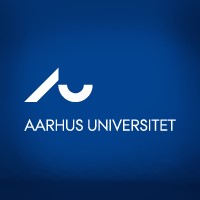Company Details
university-of-copenhagen
12,831
2,809,481,479,400,009,216
None
ku.dk
7
KØB_1334781
Completed

Københavns Universitet - University of Copenhagen Company CyberSecurity Posture
ku.dkKøbenhavns Universitet er med cirka 40.000 studerende og 9.000 medarbejdere en af Nordens største forsknings- og uddannelsesinstitutioner. Københavns Universitets mål er at drive forskning af højeste kvalitet, at tilbyde forskningsbaseret uddannelse til det højeste akademiske niveau, og at formidle ny og klassisk viden til såvel videnskabelige miljøer som til det omgivende samfund.
Company Details
university-of-copenhagen
12,831
2,809,481,479,400,009,216
None
ku.dk
7
KØB_1334781
Completed
Between 800 and 849

 KUUC Global Score (TPRM)
KUUC Global Score (TPRM)XXXX



No incidents recorded for Københavns Universitet - University of Copenhagen in 2025.
No incidents recorded for Københavns Universitet - University of Copenhagen in 2025.
No incidents recorded for Københavns Universitet - University of Copenhagen in 2025.
KUUC cyber incidents detection timeline including parent company and subsidiaries

Københavns Universitet er med cirka 40.000 studerende og 9.000 medarbejdere en af Nordens største forsknings- og uddannelsesinstitutioner. Københavns Universitets mål er at drive forskning af højeste kvalitet, at tilbyde forskningsbaseret uddannelse til det højeste akademiske niveau, og at formidle ny og klassisk viden til såvel videnskabelige miljøer som til det omgivende samfund.


The Spanish National Research Council (Consejo Superior de Investigaciones Científicas-CSIC) is a government agency for basic and applied scientific research. It is the largest public research performing organisation in Spain, with 126 centers. El Consejo Superior de Investigaciones Científicas (

Aarhus Universitet blev grundlagt i 1928 og er i dag i den absolutte verdenselite på flere forskningsfelter. Aarhus Universitet (AU) er blandt verdens 10 bedste universiteter grundlagt inden for de seneste 100 år og har en lang tradition for partnerskaber med nogle af verdens bedste forskningsinst

The Health Care Engineering Systems Center (HCESC) at the University of Illinois at Urbana-Champaign provides clinical immersion and fosters collaboration between engineers and physicians. The goal is to use our expertise in the broad areas of simulation technologies, smart health systems, data anal

Chez Ipsos, nous sommes passionnément curieux des individus, des marchés, des marques et de la société. Nous aidons nos clients à naviguer plus vite et plus aisément dans un monde en profonde mutation. Nous leur apportons l'inspiration nécessaire à la prise de décisions stratégiques. Nous
.png)
CINCINNATI (WXIX) -As Black Friday weekend approaches, cybersecurity experts are warning shoppers about increased online scams targeting...
There have been a lot of updates in privacy and cybersecurity in the last month. Read on to find out what they are.
As the social media ban for kids under 16 approaches, popular messaging app Snapchat says young people will be able to verify their age by...
Zero Trust Architecture (ZTA) is the future of cybersecurity — it is more than just a catchphrase, but recognizes that “there is no user or...
A 15‑year‑old in Jordan who goes by the handle “Rey” online has been allegedly identified as a key figure in the hacking crew Scattered...
Ransomware attacks not only cause immediate downtime and significant financial losses, but can also inflict long-term damage on a company's reputation and...
AI is evolving at a rapid pace, and the uptake of Generative AI (GenAI) is revolutionising the way humans interact and leverage this...
ChatGPT, the popular AI model developed by OpenAI and now owned by Microsoft, has reportedly been targeted in a cybersecurity breach. However, the source of...

Explore insights on cybersecurity incidents, risk posture, and Rankiteo's assessments.
The official website of Københavns Universitet - University of Copenhagen is http://www.ku.dk/.
According to Rankiteo, Københavns Universitet - University of Copenhagen’s AI-generated cybersecurity score is 845, reflecting their Good security posture.
According to Rankiteo, Københavns Universitet - University of Copenhagen currently holds 0 security badges, indicating that no recognized compliance certifications are currently verified for the organization.
According to Rankiteo, Københavns Universitet - University of Copenhagen is not certified under SOC 2 Type 1.
According to Rankiteo, Københavns Universitet - University of Copenhagen does not hold a SOC 2 Type 2 certification.
According to Rankiteo, Københavns Universitet - University of Copenhagen is not listed as GDPR compliant.
According to Rankiteo, Københavns Universitet - University of Copenhagen does not currently maintain PCI DSS compliance.
According to Rankiteo, Københavns Universitet - University of Copenhagen is not compliant with HIPAA regulations.
According to Rankiteo,Københavns Universitet - University of Copenhagen is not certified under ISO 27001, indicating the absence of a formally recognized information security management framework.
Københavns Universitet - University of Copenhagen operates primarily in the Research industry.
Københavns Universitet - University of Copenhagen employs approximately 12,831 people worldwide.
Københavns Universitet - University of Copenhagen presently has no subsidiaries across any sectors.
Københavns Universitet - University of Copenhagen’s official LinkedIn profile has approximately 2,809,481,479,400,009,216 followers.
Københavns Universitet - University of Copenhagen is classified under the NAICS code None, which corresponds to Others.
No, Københavns Universitet - University of Copenhagen does not have a profile on Crunchbase.
Yes, Københavns Universitet - University of Copenhagen maintains an official LinkedIn profile, which is actively utilized for branding and talent engagement, which can be accessed here: https://www.linkedin.com/company/university-of-copenhagen.
As of November 27, 2025, Rankiteo reports that Københavns Universitet - University of Copenhagen has not experienced any cybersecurity incidents.
Københavns Universitet - University of Copenhagen has an estimated 1,199 peer or competitor companies worldwide.
Total Incidents: According to Rankiteo, Københavns Universitet - University of Copenhagen has faced 0 incidents in the past.
Incident Types: The types of cybersecurity incidents that have occurred include .
.png)
Angular is a development platform for building mobile and desktop web applications using TypeScript/JavaScript and other languages. Prior to versions 19.2.16, 20.3.14, and 21.0.1, there is a XSRF token leakage via protocol-relative URLs in angular HTTP clients. The vulnerability is a Credential Leak by App Logic that leads to the unauthorized disclosure of the Cross-Site Request Forgery (XSRF) token to an attacker-controlled domain. Angular's HttpClient has a built-in XSRF protection mechanism that works by checking if a request URL starts with a protocol (http:// or https://) to determine if it is cross-origin. If the URL starts with protocol-relative URL (//), it is incorrectly treated as a same-origin request, and the XSRF token is automatically added to the X-XSRF-TOKEN header. This issue has been patched in versions 19.2.16, 20.3.14, and 21.0.1. A workaround for this issue involves avoiding using protocol-relative URLs (URLs starting with //) in HttpClient requests. All backend communication URLs should be hardcoded as relative paths (starting with a single /) or fully qualified, trusted absolute URLs.
Forge (also called `node-forge`) is a native implementation of Transport Layer Security in JavaScript. An Uncontrolled Recursion vulnerability in node-forge versions 1.3.1 and below enables remote, unauthenticated attackers to craft deep ASN.1 structures that trigger unbounded recursive parsing. This leads to a Denial-of-Service (DoS) via stack exhaustion when parsing untrusted DER inputs. This issue has been patched in version 1.3.2.
Forge (also called `node-forge`) is a native implementation of Transport Layer Security in JavaScript. An Integer Overflow vulnerability in node-forge versions 1.3.1 and below enables remote, unauthenticated attackers to craft ASN.1 structures containing OIDs with oversized arcs. These arcs may be decoded as smaller, trusted OIDs due to 32-bit bitwise truncation, enabling the bypass of downstream OID-based security decisions. This issue has been patched in version 1.3.2.
Suricata is a network IDS, IPS and NSM engine developed by the OISF (Open Information Security Foundation) and the Suricata community. Prior to versions 7.0.13 and 8.0.2, working with large buffers in Lua scripts can lead to a stack overflow. Users of Lua rules and output scripts may be affected when working with large buffers. This includes a rule passing a large buffer to a Lua script. This issue has been patched in versions 7.0.13 and 8.0.2. A workaround for this issue involves disabling Lua rules and output scripts, or making sure limits, such as stream.depth.reassembly and HTTP response body limits (response-body-limit), are set to less than half the stack size.
Suricata is a network IDS, IPS and NSM engine developed by the OISF (Open Information Security Foundation) and the Suricata community. In versions from 8.0.0 to before 8.0.2, a NULL dereference can occur when the entropy keyword is used in conjunction with base64_data. This issue has been patched in version 8.0.2. A workaround involves disabling rules that use entropy in conjunction with base64_data.

Get company history
















Every week, Rankiteo analyzes billions of signals to give organizations a sharper, faster view of emerging risks. With deeper, more actionable intelligence at their fingertips, security teams can outpace threat actors, respond instantly to Zero-Day attacks, and dramatically shrink their risk exposure window.
Identify exposed access points, detect misconfigured SSL certificates, and uncover vulnerabilities across the network infrastructure.
Gain visibility into the software components used within an organization to detect vulnerabilities, manage risk, and ensure supply chain security.
Monitor and manage all IT assets and their configurations to ensure accurate, real-time visibility across the company's technology environment.
Leverage real-time insights on active threats, malware campaigns, and emerging vulnerabilities to proactively defend against evolving cyberattacks.




